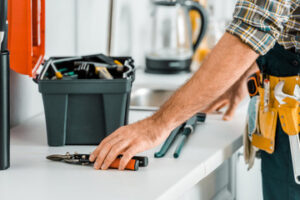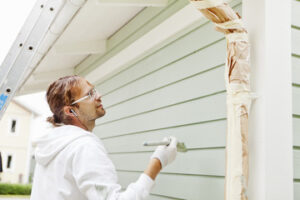If you’ve ever tried to move a piano, you know that it is a complicated task. The risks of damage can be significant, ranging from structural to cosmetic harm.
While regular house movers may have the strength, they lack the expertise to handle the delicate instrument. Professional movers have the right equipment, including padded dollies and climate-controlled trucks. Visit https://www.mountainpiano.com/ to learn more.

Professional piano movers have the right equipment to protect and transport your beloved instrument. They understand the delicate moving parts inside and out and can quickly assess the environment to plan how best to maneuver it through the space. They also have access to tools that are not available to ordinary people, such as ramps and dollies to help maneuver the piano on stairs or in tight spaces. Moreover, they are well-equipped to handle the size and weight of these specialized items.
One of the most important pieces of piano-moving equipment is the stair climber, which can be used to lift the piano off the ground and up the stairs. These devices are especially useful when you’re moving your piano in a home with steep staircases. They are designed to fit the dimensions of your piano and are easy to operate. You can find them at local hardware stores and online.
Other specialized equipment that a piano mover should have includes piano dollys and straps. These are essential for transporting the piano without damage. They are also helpful for moving the piano through narrow doors and hallways. Make sure to measure all doors and staircases before renting the necessary equipment, and ask about the capacity of the truck you will use.
If you want to save money and reduce stress, it’s best to hire a specialist rather than try to do it yourself. You can even look for a specialty mover on uShip, where you’ll be able to view customer ratings and reviews from other piano owners. You can also compare quotes from different carriers in one place, making it easier to choose the right piano mover for your needs.
When looking for a piano mover, be sure to ask about their experience and training. You should also look for a company that specializes in piano transportation and offers insurance specifically for this type of service. If the mover you’re considering does not offer specialized insurance, you can purchase an additional policy through uShip to close any gaps in coverage. Additionally, you should make sure the mover has a climate-controlled truck for long-distance moves to prevent the piano from being damaged by extreme temperatures.
They are experienced
Professional piano movers have extensive experience in moving large, bulky items. Their expertise allows them to quickly assess the space and plan how to maneuver your piano through tight hallways, stairways, and other obstacles without damaging your precious instrument or property. Additionally, they are trained to use specialized equipment, including piano dollies, straps, and protective padding. This enables them to move your piano safely and efficiently, saving you time and money.
When selecting a local mover, ask them about their previous experience moving pianos. This will give you a better idea of whether they are right for your move. You should also check whether the company is licensed and insured. This will ensure that they meet minimum standards for movers in your area, and that they have adequate insurance coverage in case of an accident.
Pianos are extremely delicate, and even slight damage to them can have a serious effect on their sound quality. For example, a simple bump in the road or a change in temperature can cause the pin blocks and soundboard to crack. If the piano is not properly stored, this can cause irreparable damage and require costly repairs. Professional movers know how to protect pianos from damage, so they are well worth the investment.
A reliable piano mover will provide a detailed quote that includes all the costs of their services. Be sure to read it carefully so that you understand what is included and what extra charges might apply. Also, make sure that there are no hidden fees, and that the quoted price is fair and reasonable.
If you are a first-time homeowner, you may want to consider hiring a professional piano mover to transport your new home’s treasured musical instrument. These specialists can help you save time and effort, while reducing the risk of injury to your family or friends. You should also avoid attempting to move a piano yourself, as this can be very dangerous and requires specialized equipment. You should also consider using a service that provides customer reviews and references. This will help you choose the best movers for your move and avoid scams.
They are licensed
A piano is a large, heavy musical instrument that requires special equipment to move. It is also a fragile item, and it can easily be damaged by improper handling. That’s why it’s important to find a professional piano mover that is licensed and insured to ensure the safety of your instrument and property. You can ask movers for references and testimonials to get a better idea of their reliability. Make sure to look for comments about punctuality, care in handling items, and customer service.
In addition to licensing, reputable piano movers must have insurance that covers their employees’ work. This is a must, especially if you plan to transport the piano long distance. A good piano mover will also be able to provide a written estimate of all costs, including labor and equipment usage. This will help you avoid any surprises during the relocation process.
When hiring a piano moving company, be sure to ask how many years they have been in business and what kinds of instruments they have moved. This will give you a better idea of their experience and whether they are well-suited for your specific needs. You should also ask if they have any special techniques for dealing with challenging situations, such as navigating tight spaces or stairs.
You can also choose a piano mover that specializes in long-distance moves, which will save you time and money. These movers will know how to handle your instrument safely and efficiently, regardless of the distance of the move. They will use the proper equipment, like padded dollies and ramps, to prevent damage to the piano. They will also wrap the piano in padding to protect it from bumps and bruises.
Whether you are moving your prized piano to a new home or simply to a local event, Oz Moving can help. Our team of experts has over 30 years of experience in moving all types of pianos, from small to large grand pianos. We can disassemble and reassemble the keys, pedals, and lid; and properly pack your instrument inside and out to prevent damage. We are also able to load and unload your piano on trucks equipped with the necessary equipment, such as tie downs, for safe and secure transportation.
They are insured
When choosing a piano mover, be sure to ask about their insurance. The best piano movers will offer specialized coverage for your instrument, which covers the damage or loss during transport. This additional layer of protection can help close any gaps in your carrier’s insurance and protect you from unexpected fees. In addition to ensuring the proper coverage, you should also look at the company’s customer reviews and references. This will give you a better sense of their reliability and professionalism.
Moving a piano requires a lot of strength, but you also need to be careful not to cause any damage to the instrument or your home. Hiring a professional piano mover will ensure that your move is done safely and that you won’t have any problems with your new home. If you try to save money by removing the piano yourself, you’ll have to deal with the extra cost of repairing any damage.
Piano movers have extensive experience handling different types and sizes of pianos, and they know how to maneuver the instrument through narrow doors and flights of stairs. They will carefully pack and secure your piano, which will help reduce the risk of damage during transit. Additionally, they will have the right equipment for transporting your piano, including skid boards and piano dollies.
It is important to hire piano movers with a good reputation and extensive industry experience. They should also be licensed and insured, and should have a solid history of client satisfaction. They should be prepared to provide you with a detailed estimate and answer any questions you may have about their services.
During the moving process, a good piano mover will inspect your piano for damage and wear and tear. They will also prepare it for transportation, removing any loose parts and securing them with straps. They will then load it onto the truck and secure it to prevent shifting during transport.
You should always choose a reputable piano mover who is fully insured and bonded to handle your piano. While it is possible to move a piano yourself, it isn’t recommended unless you are extremely strong and have a lot of experience. Even if you’re very strong, it’s not worth the risk of damaging your piano or your home.




